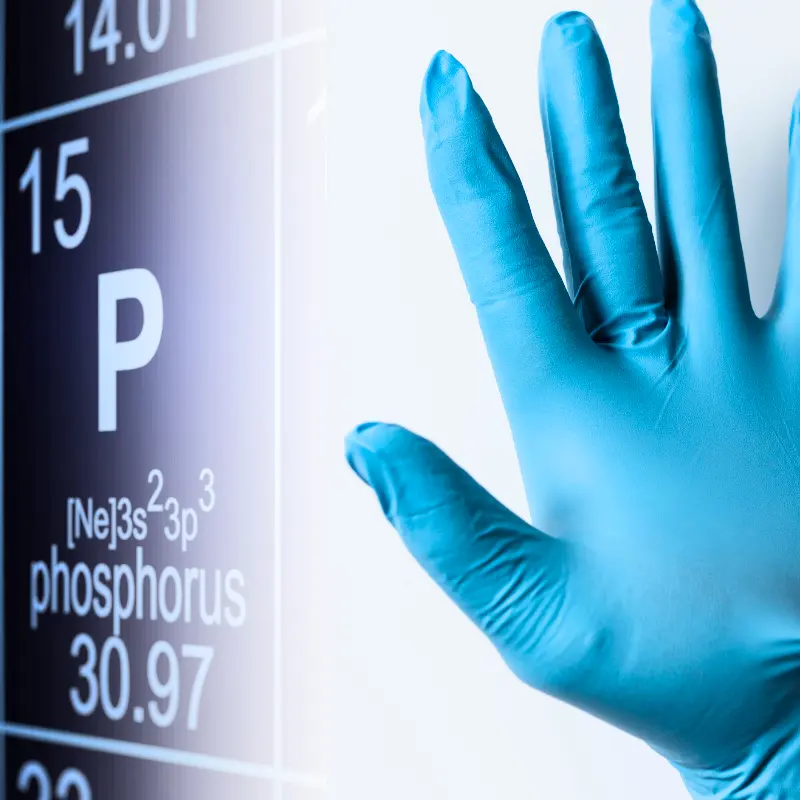Nitrile gloves play a crucial role in various industries, offering protection and durability. But have you ever wondered about the role sulfur plays in enhancing their mechanical properties? Sulfur is a key element in the vulcanization process of nitrile gloves, creating cross-links that improve elasticity and strength. However, the use of sulfur can also lead to allergic reactions in some individuals. This post will explore the importance of sulfur in nitrile gloves, its impact on the glove’s properties, and how manufacturers are dealing with allergens in this essential protective gear.
The Role of Sulfur in Vulcanization

Creating Cross-Links between Polymer Chains
Your nitrile gloves undergo a process called vulcanization, where sulfur is added to create cross-links between the polymer chains, resulting in a more elastic and durable material.
Enhancing Mechanical Properties
Sulfur cross-links in nitrile gloves improve their strength and durability. Gloves that have not been aged and contain sulfur showed a remarkable advancement in both modulus and hardness when compared to gloves without sulfur. This clearly demonstrates the vital role that sulfur plays in enhancing mechanical properties.
It’s important to balance the advantages of sulfur in enhancing mechanical properties with the potential risk of allergic reactions from sulfur-containing accelerators. Some manufacturers have developed “accelerator-free” nitrile gloves to minimize the risk while maintaining the desired properties.
Benefits of Sulfur in Nitrile Gloves
Improving Tensile Strength and Hardness
Benefits of sulfur in nitrile gloves include enhancing their mechanical properties such as tensile strength and hardness. For example, unaged nitrile gloves with 7 parts per hundred rubber of sulfur showed a remarkable 650% improvement in 20% modulus and a 27.4% increase in shore A hardness compared to gloves without sulfur. This demonstrates the significant impact of sulfur on the durability and elasticity of nitrile gloves.
Increasing Tear Strength and Compression Set
Adding small amounts of sulfur (less than 4 parts per hundred rubber) to nitrile gloves can also increase tear strength, further improving their overall performance. Sulfur is crucial in creating cross-links between polymer chains during the vulcanization process, leading to a more elastic and durable material. This improvement in tear strength and compression set highlights the importance of sulfur in enhancing the quality of nitrile gloves.
The Dark Side of Sulfur: Allergic Reactions
Some sulfur in nitrile gloves can lead to the formation of sulfur-containing accelerators, such as thiurams and dithiocarbamates, which are known to cause allergic contact dermatitis. These accelerators can persist in the gloves even after the vulcanization process, posing a risk to sensitive individuals.
Risk of Allergic Contact Dermatitis
With the presence of sulfur-containing accelerators in nitrile gloves, there is a potential risk of allergic contact dermatitis (Type IV allergy) among users. Studies have shown that these accelerators can trigger adverse skin reactions, highlighting the importance of addressing this issue to protect individuals who may be sensitized to these compounds.
Sulfur-containing accelerators are a double-edged sword in the production of nitrile gloves. While they are vital for enhancing mechanical properties, their presence can also lead to allergic reactions in some individuals. Manufacturers are exploring alternative vulcanization systems or reducing the use of sulfur-containing accelerators to mitigate this risk while maintaining the desired performance of the gloves.
Accelerator-Free Nitrile Gloves: A Solution
Keep in mind that some manufacturers have turned to alternative vulcanization systems to create accelerator-free nitrile gloves. These systems aim to achieve the desired mechanical properties of nitrile gloves without using sulfur-containing accelerators.
Minimizing Sulfur-Containing Accelerators
One way to minimize the risk of allergic reactions linked to sulfur-containing accelerators in nitrile gloves is to reduce their presence in the manufacturing process. By minimizing the amount of sulfur and using alternative accelerators, manufacturers can create gloves that are less likely to cause allergic contact dermatitis.
Plus, it is crucial to note that while sulfur is important for enhancing the mechanical properties of nitrile gloves, the presence of sulfur-containing accelerators poses a risk to individuals sensitive to these compounds. By developing accelerator-free nitrile gloves, manufacturers can provide a safer option for individuals who are prone to allergic reactions.
Summing up, sulfur plays a crucial role in the vulcanization process of nitrile gloves by creating cross-links between polymer chains, enhancing mechanical properties and durability. While increasing sulfur content improves characteristics like tensile strength and hardness, it can also lead to allergic reactions due to the formation of sulfur-containing accelerators. The development of “accelerator-free” nitrile gloves aims to address this issue by using alternative vulcanization systems to reduce the risk of allergic reactions while maintaining desired properties.